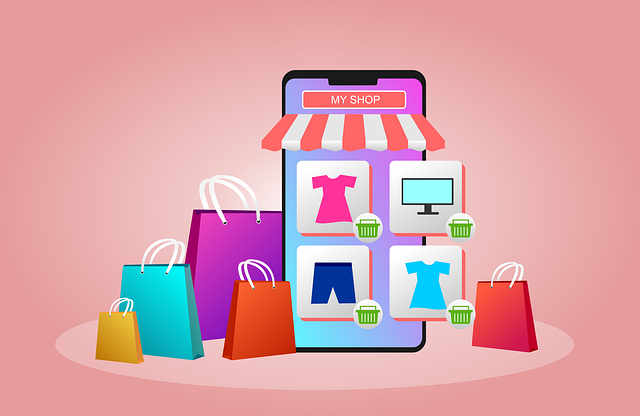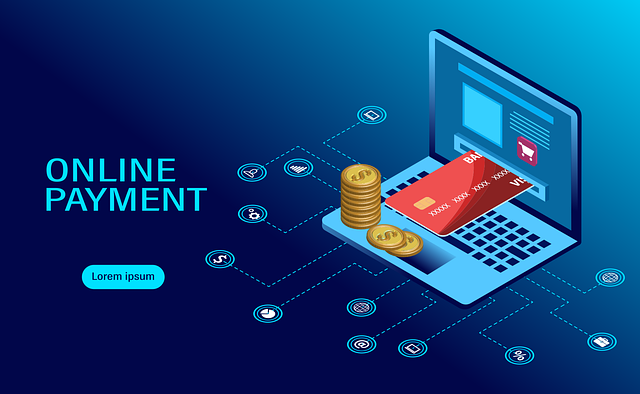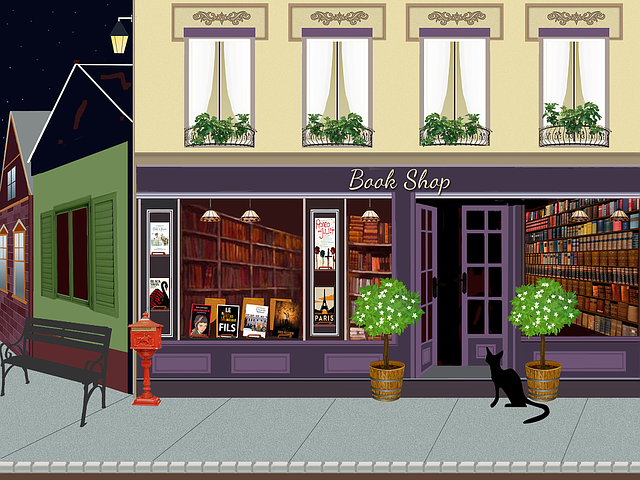An effective e-commerce store design combines aesthetics and functionality to drive conversions and build brand loyalty. Key elements include intuitive navigation, clean layout, high-quality product images, compelling copy, clear calls to action (CTAs), mobile responsiveness, and strategic use of whitespace. Understanding target audiences and choosing the right platform are crucial. A well-designed store layout optimizes user experience with efficient filtering, sorting, and search functions, leading to increased sales. Essential features like secure payment gateways and responsive design enhance functionality. Optimizing for mobile devices and integrating visually captivating elements like videos and infographics further improve engagement and brand loyalty. Continuous testing and refinement ensure a successful e-commerce store in the dynamic digital landscape.
E-commerce store development is a robust strategy for businesses aiming to thrive in the digital landscape. A well-designed online store can significantly impact customer engagement and sales. This comprehensive guide navigates the essential aspects of creating an effective e-commerce store, from understanding fundamental design principles to optimizing product display and integrating crucial features. We’ll explore strategies for defining target audiences, choosing the right platform, enhancing mobile responsiveness, and leveraging visual elements to create a captivating shopping experience.
Understanding E-commerce Store Design Fundamentals

Developing an effective e-commerce store design is a cornerstone for success in the digital retail space. It involves more than just aesthetics; it’s about creating a user-friendly environment that drives conversions and fosters brand loyalty. At its core, e-commerce store design should prioritize intuitive navigation, ensuring customers can effortlessly browse products, understand key information, and complete their purchases with minimal friction.
Key elements to consider include a clean layout, high-quality product images, compelling copy, and clear calls to action. Effective design also leverages whitespace for better visual hierarchy, enhances mobile responsiveness for growing mobile traffic, and incorporates strategic CTAs throughout the site to guide users on their purchasing journey. By balancing aesthetics with functionality, businesses can create an engaging e-commerce experience that stands out in a competitive market.
Defining Your Target Audience for Effective Design

Defining your target audience is a fundamental step in shaping the design of your e-commerce store. Understanding who your customers are, their preferences, and pain points allows for the creation of an intuitive and appealing shopping experience. For instance, if your target market comprises tech-savvy millennials, your design should incorporate modern aesthetics, seamless navigation, and mobile optimization to cater to their digital habits. On the other hand, a more traditional audience might prefer a clean, classic layout with easy-to-read fonts and clear product categories.
By segmenting your audience, you can tailor various aspects of the ecommerce store design, including color schemes, typography, imagery, and even the overall brand voice. This personalized approach enhances user engagement, encourages conversions, and fosters customer loyalty by ensuring that the digital storefront resonates with its intended visitors.
Choosing the Right E-commerce Platform: A Key Decision

When developing an ecommerce store, choosing the right platform is a pivotal decision that will shape your online retail experience. The market offers a plethora of options, each with unique features catering to distinct business needs. From Shopify and WooCommerce to BigCommerce and Magento, understanding the strengths and weaknesses of each platform is paramount. Key considerations include ease of use, scalability, customization capabilities, built-in marketing tools, and cost—all factors that contribute to a seamless and successful ecommerce store design.
The right platform acts as the backbone of your digital retail presence, enabling you to build a visually appealing, user-friendly store that converts browsers into buyers. A well-chosen platform should not only accommodate current sales goals but also future growth aspirations. By aligning your platform selection with your brand identity and target audience, you can create an engaging online shopping experience that fosters customer loyalty and drives revenue.
Creating an Attractive and User-Friendly Layout

A well-designed ecommerce store layout is a powerful tool to engage and convert customers. In today’s digital landscape, where users have endless options at their fingertips, creating an attractive and user-friendly interface is crucial for standing out from the competition. Ecommerce store design should focus on simplicity and intuitiveness, ensuring visitors can effortlessly navigate and browse products. A clean layout with clear calls to action encourages exploration, fostering a seamless shopping experience.
Visual aesthetics play a significant role in capturing attention and building brand identity. Incorporating high-quality product images, compelling headlines, and intuitive menus allows stores to showcase their offerings effectively. By prioritizing user experience, with easy filtering, sorting, and search functions, ecommerce platforms can enhance customer satisfaction and drive sales. A well-designed layout not only attracts visitors but also encourages them to explore further, ultimately leading to increased conversions.
Optimizing Product Display and Navigation

In the realm of e-commerce store development, optimizing product display and navigation is a game changer. A well-designed ecommerce store offers users a seamless experience, encouraging browsing and ultimately driving sales. This involves employing strategies that showcase products effectively while ensuring intuitive navigation. Visual elements, such as high-quality images and detailed descriptions, play a crucial role in engaging customers and providing them with the information they need to make informed purchasing decisions.
Ecommerce store design should prioritize simplicity and clarity in product navigation. Users appreciate easy access to desired items, whether through well-organized categories or powerful search functionality. Incorporating filters and sorting options further enhances the browsing experience, allowing shoppers to narrow down choices based on their preferences. By focusing on these optimization techniques, online retailers can foster a user-friendly environment that fosters exploration and promotes higher conversion rates.
Integrating Essential Features for Seamless Functionality

When developing an ecommerce store, integrating essential features is crucial for seamless functionality and an optimal user experience. Key components such as a secure payment gateway, efficient inventory management system, and responsive design are non-negotiable. A secure platform ensures customers’ financial information remains protected, fostering trust and encouraging transactions.
Ecommerce store design should also prioritize ease of navigation, fast loading times, and mobile optimization. These factors contribute to higher conversion rates as users can effortlessly browse products, compare prices, and make purchases on any device. Additionally, incorporating features like customer reviews, product filtering options, and personalized recommendations enhances interaction and aids in informed purchasing decisions.
Enhancing Mobile Responsiveness: A Must-Have

In today’s digital era, consumers increasingly shop online using their smartphones and tablets. For an effective and successful e-commerce store design, enhancing mobile responsiveness is no longer an option but a necessity. A mobile-friendly website ensures that customers have a seamless and enjoyable experience regardless of the device they use.
Mobile responsiveness involves optimizing your ecommerce store’s layout, images, and content to adapt gracefully to different screen sizes and resolutions. This means ensuring fast loading times, easily readable text, and intuitively navigable menus on both small and large screens. By prioritizing mobile users, you not only cater to a broader customer base but also improve search engine rankings, boost conversion rates, and build brand loyalty.
Leveraging Visual Elements to Improve Engagement

In the competitive world of e-commerce, visual elements play a pivotal role in capturing and retaining customer attention. Ecommerce store design is not just about showcasing products; it’s about telling a story that resonates with your target audience. High-quality images, videos, and infographics not only enhance the user experience but also significantly improve engagement. Visual content acts as a powerful tool to convey product features, benefits, and unique selling points, ensuring customers understand the value proposition instantly.
By integrating these elements seamlessly into your online store’s design, you create an immersive shopping environment that encourages browsing and ultimately boosts conversions. Modern consumers are visually oriented, and leveraging this aspect can make your e-commerce platform stand out from the crowd. A well-designed ecommerce store with compelling visuals not only attracts visitors but also fosters trust and enhances brand perception, leading to increased customer loyalty and repeat business.
Testing, Launching, and Continuously Improving Your Store

Before launching your e-commerce store, thorough testing is crucial to ensure a seamless user experience across all devices and browsers. This involves checking functionality, load times, mobile responsiveness, and compatibility with different operating systems. By identifying and fixing any issues before going live, you can enhance customer satisfaction and boost conversions.
Post-launch, continuous improvement is key to staying competitive in the dynamic e-commerce landscape. Regularly analyze website analytics to understand user behavior, identify popular products, and pinpoint areas for enhancement. Incorporate feedback from customers, stay updated with industry trends, and adapt your store design accordingly. This iterative process ensures your ecommerce store remains engaging, relevant, and optimized for success.
